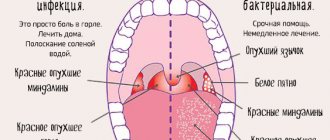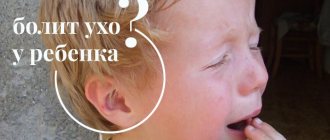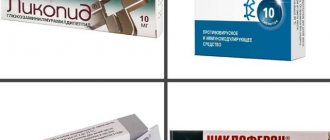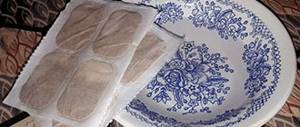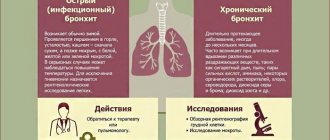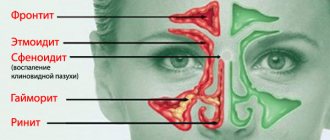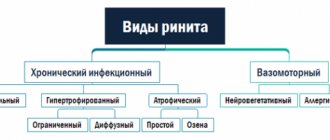A child's red throat is not a disease. At least, that's what Dr. Komarovsky thinks. There are a number of additional factors to consider that accompany this redness. But one also cannot ignore the absence of this redness, since this may be a symptom of one of the diseases. How to treat and what to do with such signs is a question that worried parents often ask. However, it is necessary to understand the true causes of red throat.
What is the best way to treat a child's throat?
Treatment for a throat differs depending on the type of disease. Mostly, a child develops a red throat due to a common cold. This is one of the symptoms that appears, but not the only one. Among other signs, the following are distinguished:
- slight increase in temperature;
- sore throat;
- stuffy nose;
- rhinitis.
However, in addition to ARVI, the following diseases can cause a red throat:
- laryngitis;
- pharyngitis;
- false croup;
- angina;
- chronic tonsillitis.
That’s why Dr. Komarovsky says about the throat: treatment methods should be based on the types of diseases of the larynx.
For pharyngitis, doctors recommend drinking plenty of warm drinks (compotes, tea with honey and raspberries, fruit juice). In addition, it is necessary to maintain air humidity at a constant level, gargle, and sometimes apply compresses. Doctors also do not recommend that children in this condition talk a lot, so as not to damage the vocal cords, and do not include spicy or very hard foods in their diet. If a red throat is caused by an infectious disease, then most likely the course of treatment will consist of antibiotics and aerosols.
False croup is a form of acute laryngitis. It is accompanied by severe difficulty breathing as a result of narrowing of the larynx and sharp spasms of the glottis. Seizures occur during sleep. If parents observe sweating, restlessness, difficulty breathing, bluish lips and a loud cough in the child, then they should immediately call an ambulance to hospitalize the baby. Before the medical team arrives, parents need to wash the child with water and try to calm him down.
Sore throat in a child most often begins with a significant increase in body temperature. Next comes chills, irritability and excessive tearfulness, loss of appetite. The child may complain of difficulty swallowing saliva and a sore throat. For sore throat, the doctor prescribes treatment with antibiotics that have a narrow spectrum of action.
This type of treatment is not as aggressive as others, does not cause side effects and acts exactly at the site of inflammation. To moisturize the tonsils and throat, the child should gargle and drink plenty of liquid. If a child has a red throat and fever, parents should limit the child’s physical activity, feed only crushed food, but not use warming compresses. After only 3 days, plaque on the tonsils begins to disappear. But if you don’t spend enough time on treatment, a sore throat can turn into chronic tonsillitis.
Chronic tonsillitis is an infectious disease. It must be treated only under the supervision of a doctor, since periodic manifestations of the disease can seriously harm the functional abilities of the kidneys, heart and joints. Children experience a sore throat, dryness and unpleasant odor in the mouth, and difficulty swallowing. They become moody and inactive.
A child’s temperature is a serious sign that cannot be ignored. Treatment is carried out with antibiotics. If the tonsils cannot restore their protective function, and chronic inflammation does not disappear, then surgical intervention is recommended. The tonsils are removed, and children get sick less because the source of possible infection disappears.
Among the methods of treating red throat in children, special attention should be paid to folk remedies, which to this day do not lose their relevance and effectiveness. If children have a sore throat, you can prepare a warm compress. To do this, you need to mix one teaspoon of acetic acid with 500 g of water, then put it on the stove. Heat to a temperature of 38 degrees. Moisten a cotton swab in the resulting decoction and apply it to the neck.
Gargling with a soda solution is a great help for throat diseases. This allows you to moisturize the mucous membrane of the tonsils. To do this, you need to dissolve a spoon (tea) of soda in a glass of boiled water.
Komarovsky believes that a child’s throat may have a slightly reddish tint to the back wall or may turn red under the influence of a virus. Every mother should know what throat color corresponds to the normal state of health of the baby. However, you shouldn’t just rely on the fact that Komarovsky knows how to treat a child’s red throat. It is important to contact your local pediatrician for a timely diagnosis.
Treatment of red throat without medications
If an adult or child experiences redness of the throat, it is necessary to first establish the cause of the changes, and only then begin any treatment. This approach will help to avoid deterioration due to an incorrectly chosen method of treatment. Also in this way it will be possible to prevent the rapid development of the disease, which is quite possible with improper treatment.
Treatment without the use of medications is suitable only at the earliest stages of the development of the pathological process. With its help, you can alleviate unpleasant symptoms before going to a specialist and prescribing full-fledged treatment.
To alleviate your condition, in order to reduce the susceptibility of irritated mucous membranes, it is recommended to give up smoking and alcohol, and also give preference to dishes that are not replete with a lot of spices. Patients are also advised not to drink excessively hot drinks.
For the initial stage of treatment, experts also recommend inhalation. Inhalations can be carried out with soda or oils of various herbs. You can also use decoctions of various herbs that relieve inflammation. For example, a decoction of chamomile will do.
To alleviate your condition, before consulting a doctor, you can gargle with warm water and salt . This procedure will reduce inflammation and help fight the infectious process.
Drug-free treatment is good not only in the early stages of the disease, but also for helping pregnant women who cannot use many medications.
It is important to remember that non-drug treatment is aimed only at reducing the severity of symptoms. It is not recommended to treat serious pathological processes, especially chronic ones, with its help.
Child has a congestion in the throat
Not only children, but also adults experience a feeling of a plug in the throat during a cold. This is understandable. When you have a cold, when swelling of the mucous membrane occurs, the nerve endings are irritated, which causes pain in the throat.
In most cases, if the child’s immune system copes with a cold successfully, the inflammatory process can be cured by rinsing and drinking plenty of fluids. But treatment at home is fraught with the fact that chronic diseases of the pharynx often develop: pharyngitis, chronic laryngitis and chronic tonsillitis. Under certain circumstances, a smell from the mouth and a feeling of a lump in the throat appear. If you look at the oral cavity, you can see purulent plugs in the throat - yellowish-white lumps with an unpleasant odor that come out of the side walls of the pharynx.
In older and younger children, such traffic jams are a consequence of the development of sore throat. Corks come in white or yellow. The entire surface of the tonsils is covered with blisters containing pus. Children often complain of headaches, loss of appetite and general weakness of the body. There is also an increase in body temperature. When testing the blood, dramatic changes are observed as the level of white blood cells increases sharply.
If there is a suspicion of diphtheria sore throat, the baby must be hospitalized immediately. This is due to the possible occurrence of complications in the future. In this case, a gray coating appears, which causes pain when removing it.
When traffic jams occur, parents are often interested in having their tonsils removed. In some cases, the child will be able to survive this, but there is always a risk of complications in the heart, kidneys and joints. This is why you should always consult your doctor.
Pus plugs worry not only children. Adults also present with similar problems. They are caused by diseases such as tonsillitis and pharyngitis.
How to treat a red throat in a baby using the Komarovsky method?
Infants get sick much less often compared to older children.
This is due to less contact with people who may be a source of infection, as well as stronger immune protection in infants (antibodies circulating in the blood, transmitted from the mother in utero, and obtained through breast milk).
However, despite all the efforts of young parents, a sore throat and cough may still appear in the baby. Komarovsky gives some advice on this matter for treating the disease.
Please note that any change in the baby’s behavior, including the appearance of specific signs of illness, requires consultation with a pediatrician.
Causes of symptoms
To determine treatment tactics, you should conduct an examination of the child, additional diagnostics, and then determine the cause of the development of the disease.
A red throat may be a manifestation of:
- ARVI, which is characterized by rhinorrhea, nasal congestion, lacrimation, low-grade hyperthermia. In this case, pharyngitis is a symptom or complication of a viral infection;
- measles Promotes an increase in temperature to 38.5 degrees, the appearance of cough, rhinorrhea and conjunctivitis. Specific spots of a red hue and irregular shape appear on the mucous membrane of the cheeks and soft palate;
- chickenpox, which is manifested by dyspeptic disorders, fever and rashes in the form of papules and vesicles with transparent transudate, after opening which crusts form. The disease is characterized by constant rash, so both crusts and original spots can be found on the body;
- rubella. Transplacentally transmitted from an infected mother. Symptomatically, the disease is manifested by rhinorrhea, cough, conjunctivitis, lacrimation, itching and rashes in the form of small, red, round spots;
- diphtheria. A severe disease characterized by febrile hyperthermia and the appearance of films on the surface of the tonsils, which can spread to the posterior pharyngeal wall and larynx, complicated by asphyxia;
- sore throats, often of bacterial origin, but fungal ones are also possible;
- scarlet fever. Manifested by febrile fever, severe intoxication syndrome and rash.
- allergic factors. After exposure to an allergen on the mucous membranes of the nasopharynx/oropharynx, an allergic reaction with pharyngopathy may develop.
- Teething, which begins at 4-6 months, can be asymptomatic or provoke a sore throat, low-grade hyperthermia, itching and swelling of the gums.
The appearance of a cough indicates the spread of an infectious-inflammatory process to the larynx, trachea, bronchi, or is a manifestation of an allergic reaction.
Nonspecific symptoms of the disease
Until a child starts talking, it is quite difficult to determine what is bothering him. If you suspect the development of the disease, you should pay attention not only to specific symptoms (rashes, cough, runny nose, red throat), but also general signs. These include:
- poor appetite or complete refusal to eat. In this case, the baby may refuse breastfeeding. When trying to breastfeed, the baby develops a sore throat, stops eating and begins to cry. With nasal congestion, the baby does not breastfeed because he cannot breathe, which also provokes crying.
- moodiness indicates the appearance of itchy skin or soreness in the throat, stomach or other part of the body;
- lethargy, drowsiness may indicate an increase in temperature;
- refusal to play with toys is also a manifestation of the disease in infants.
Pharyngitis and sore throat
Most often, pharyngitis is diagnosed in children due to a viral disease. Clinically the disease manifests itself:
- low-grade hyperthermia;
- lacrimation;
- rhinorrhea, nasal congestion;
- sore throat;
- joint pain;
- capriciousness;
- lethargy;
- loss of appetite.
If the temperature exceeds 38 degrees, the tonsils are swollen, hyperemic and purulent follicles are visualized, tonsillitis should be suspected. Note that in this case there is no runny nose, and nearby lymph nodes are palpable enlarged, swollen and painful.
In infants, when the temperature rises to 39 degrees, convulsions, vomiting and confusion may develop.
Local therapy
Features of the treatment of infants include the prohibition of the use of gargles.
Pediatricians often prescribe irrigation with medicinal solutions that have anti-inflammatory, antiseptic and analgesic effects.
- It is recommended for infants to irrigate not the posterior pharyngeal wall, which can provoke vomiting and laryngospasm, but the buccal mucosa or pacifier;
- strict adherence to the dosage and frequency of use of medications is required;
- lubrication with a gauze swab soaked in a solution allows you to carefully sanitize the mucous membrane from pathogenic microorganisms. Miramistin, Furacilin are allowed for the procedure;
- the use of herbal infusions (chamomile, calendula, sage);
- Resorption of tablet forms of medications is impossible, so the doctor may recommend crushing a lollipop into powder and mixing with water or lubricating the buccal mucosa.
If a child develops rhinorrhea, mucous discharge may interfere with the feeding process. To prevent this you need to:
- cleansing the nasal cavities with saline solutions, for example, saline, Aqua Maris, as well as antiseptics (Furacilin, Miramistin). You can also use a small concentration of chamomile decoction;
- in the form of drops you can use antiviral drugs, for example, Nazoferon;
- homeopathic medicines, for example, Delufen has anti-inflammatory, decongestant, antiallergic and antiseptic effects;
- vasoconstrictor drugs, such as Otrivin, Vibrocil, help eliminate swelling of the mucous membrane by reducing the release of the liquid part from the bloodstream, and also reduce the production of mucous secretion.
Fighting cough
The following medications in the form of a suspension and drops can be used in the treatment of cough:
- antitussives (Sinekod - from two months, Panatus - from six months). They help reduce the cough reflex, overcome paroxysmal dry coughs, and are most often used for whooping cough. Dosages are selected taking into account body weight.
- mucolytics (Ambrobene, Lazolvan) help reduce the viscosity of sputum, improve the drainage function of the bronchi and stimulate the removal of sputum;
- expectorants with ivy and plantain, for example, Prospan, Bronchicum.
If the cough persists and the fever increases, inflammation of the lung tissue should be suspected.
Treatment of pneumonia is carried out exclusively in a hospital setting under 24-hour medical supervision. The clinic has everything necessary for emergency care in case of increasing respiratory failure.
General recommendations
Depending on the pathogenic pathogens, the following are prescribed:
- antiviral drugs, for example, Viferon in the form of suppositories, which allows you to overcome a viral infection and increase the body's immune defense. The medicine is prescribed only for viral origin of the disease;
- antibacterial drugs, for example, Amoxiclav, are taken for tonsillitis and other bacterial diseases;
- antipyretic drugs, such as Panadol, Nurofen in the form of a suspension, Efferalgan in suppositories;
- breastfeeding does not stop, despite the child’s decreased appetite. Breast milk has beneficial antibodies needed to strengthen the immune system;
- You should not dress children very warmly, as increased sweating will increase fluid loss, which will lead to dehydration and drying out of the mucous membranes;
- air humidification, regular wet cleaning and room ventilation;
- strengthening the immune system with Lifomyosot, Tonzipret. The drugs are used for otolaryngological diseases.
When the first symptoms of disease appear, you should consult a doctor for examination and determine treatment tactics. The treatment course can be carried out at home or requires hospitalization of the child. This depends on the severity of the pathology, the presence of concomitant diseases and the developmental characteristics of the child.
Galaktionova Svetlana
Sources: medscape.com, health.harvard.edu, medicalnewstoday.com.
Source: https://fishing-tackle.ru/simptomy-gorla/deti/krasnoe-u-grudnichka-komarovskij.html
Staphylococcus in a child's throat
Staphylococcus is a bacterium classified as a gram-positive coccus. Special types of this bacterium are constantly present on the skin and mucous membranes. Some staphylococci can be dangerous for children, causing illness. The process of reproduction of staphylococci is associated with the state of the baby’s immune system.
Signs of staphylococcus in the throat:
- discomfort in the oropharynx, which intensifies when swallowing saliva or food;
- the presence of red and swollen tonsils;
- the appearance of purulent plaque on the tonsils;
- an increase in the size of the cervical lymph nodes;
- elevated temperature;
- the occurrence of headaches and dizziness;
- decreased or loss of appetite.
But there are also concomitant manifestations of the disease. Children may suffer from body rashes, stomach upsets and intestinal pain. There is also a possibility of flatulence and abdominal pain. In addition, in some cases, the child’s nervous system may also be affected.
As for children, staphylococcus acts quite aggressively. As a result of the actions of the bacteria, other harmful microorganisms gain access to the child's body. Staphylococcus enzymes are capable of destroying cells, including leukocytes, which are a defense for the body. Staphylococci are extremely dangerous for newborn babies, since they have not yet developed immunity to bacteria. Therefore, the baby may experience purulent processes and blood clots.
When treating staphylococci in children, antibiotics, solutions based on Chlorphilipt and bacteriophages are used. For treatment to be effective, you can also use IRS-19 nasal sprays, which help improve immunity.
